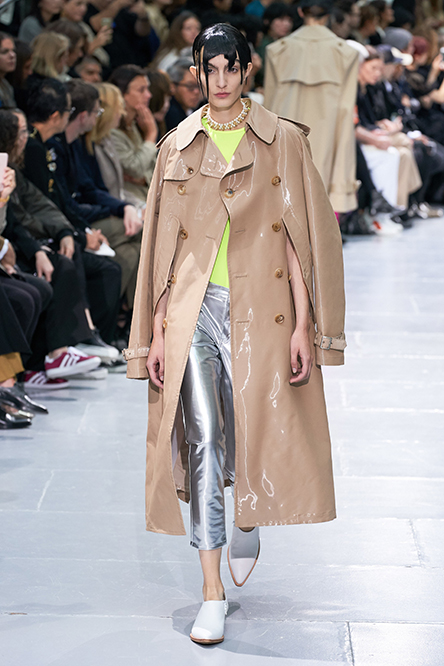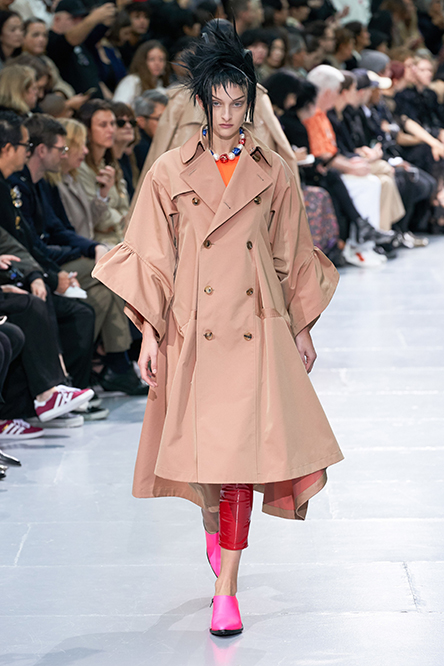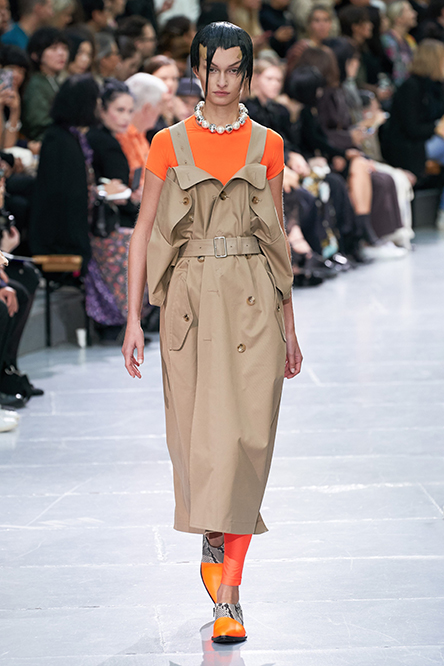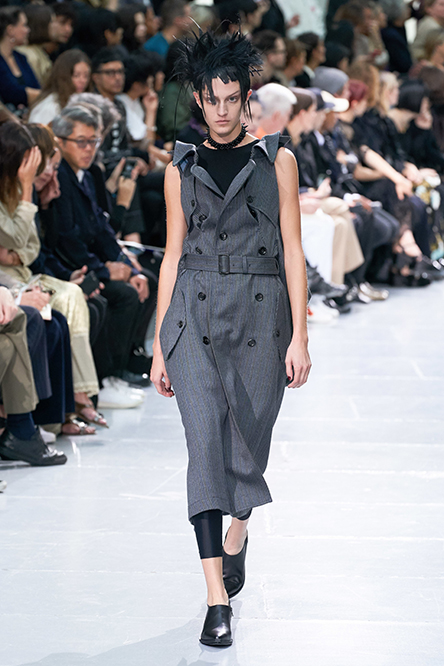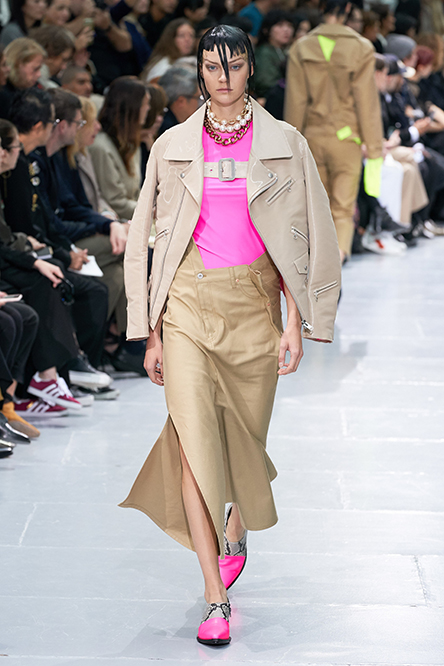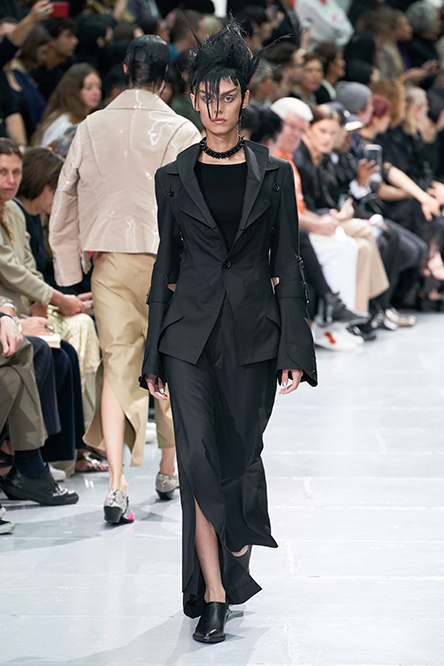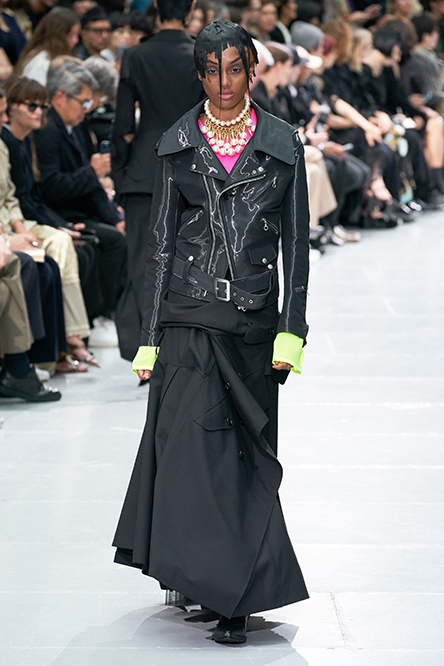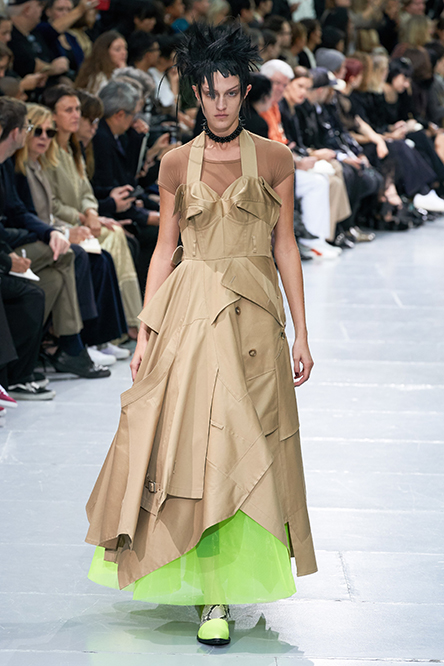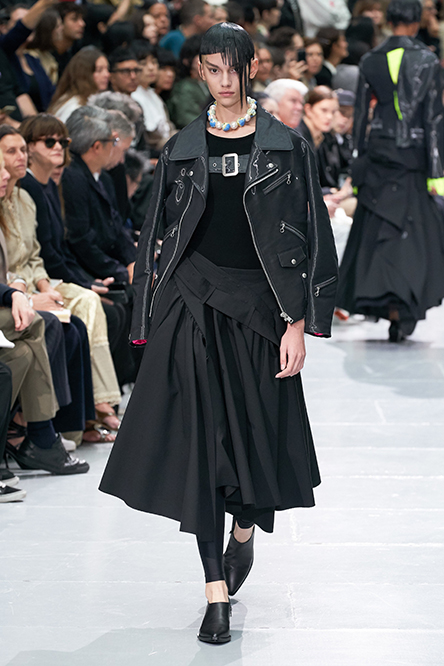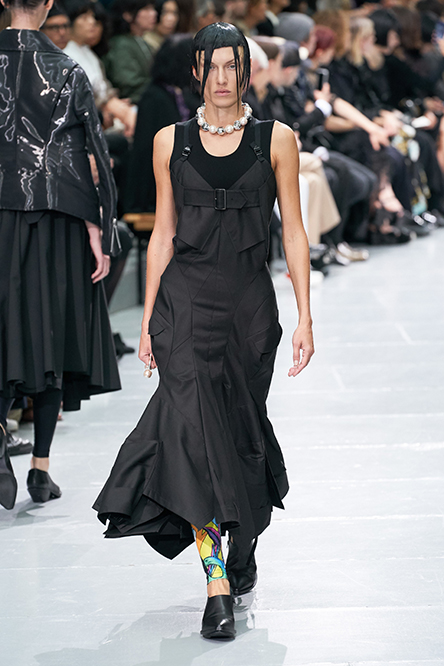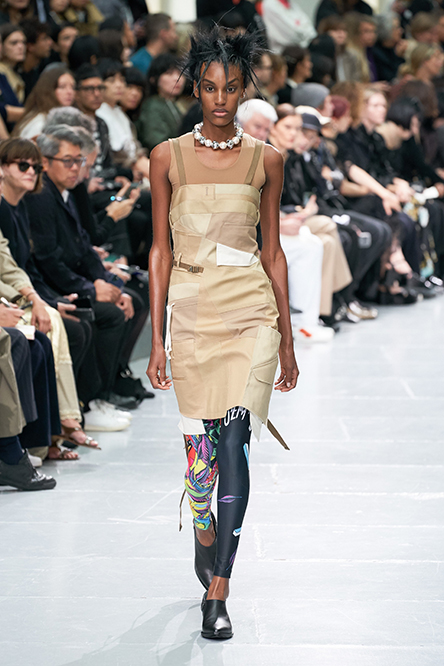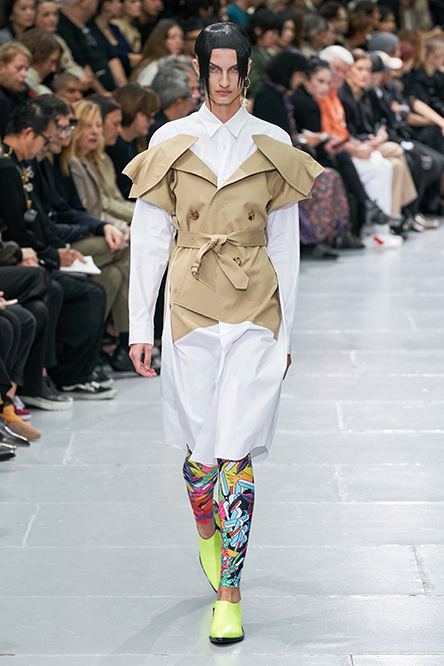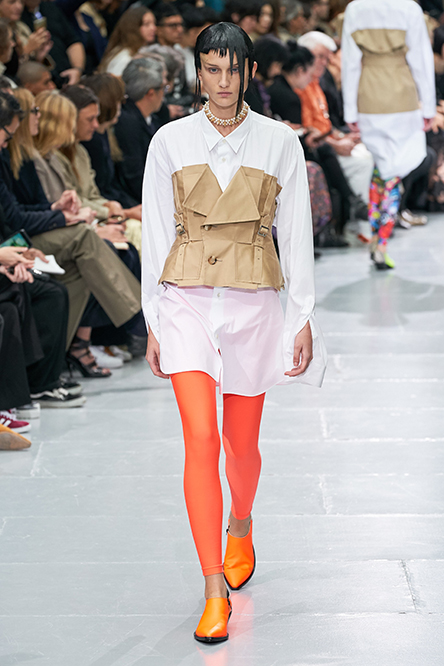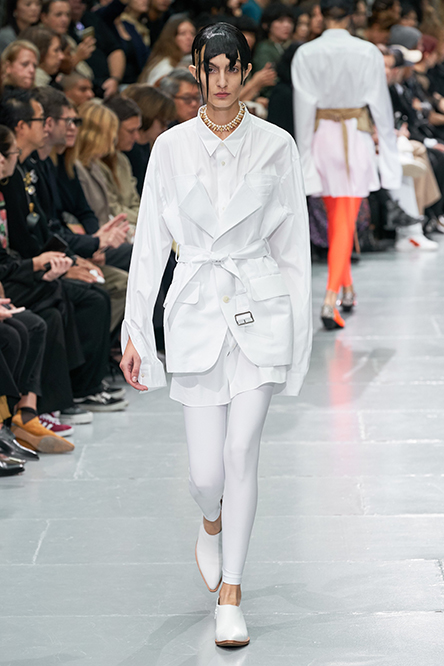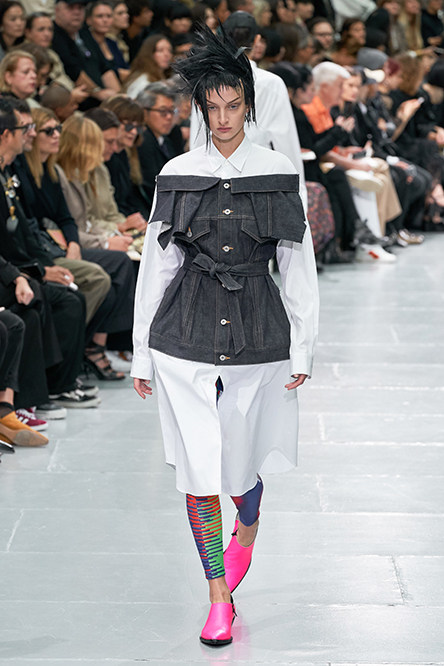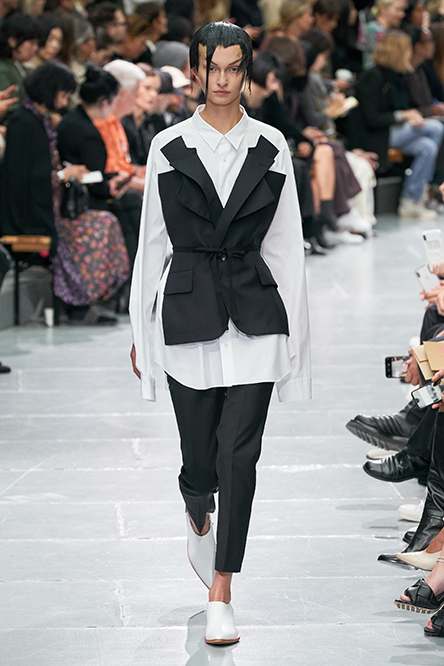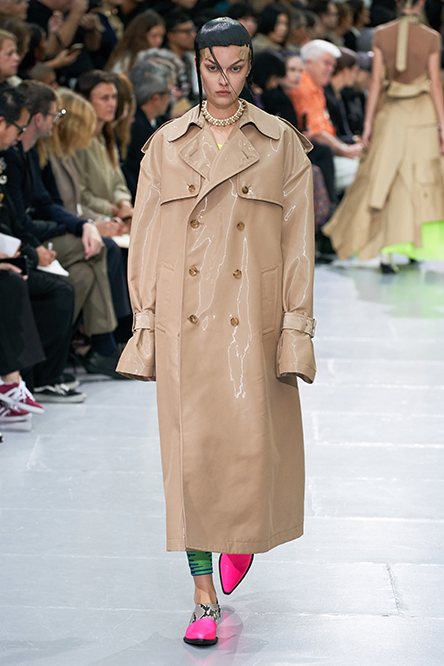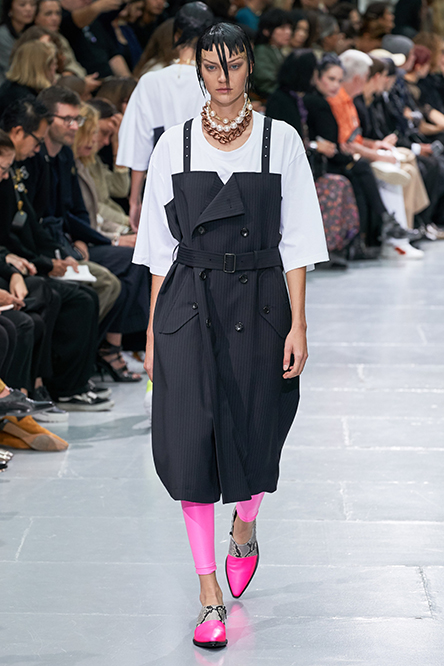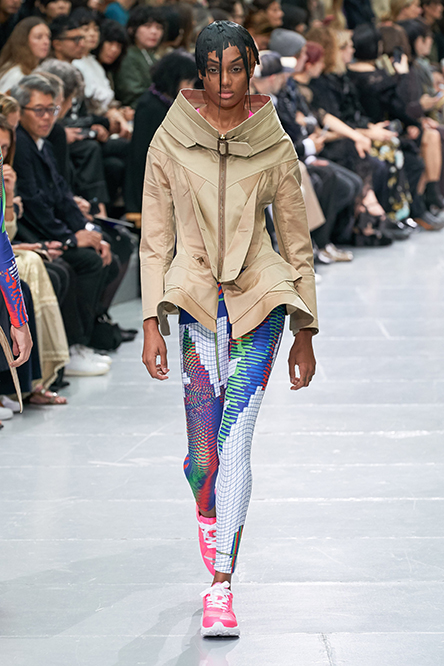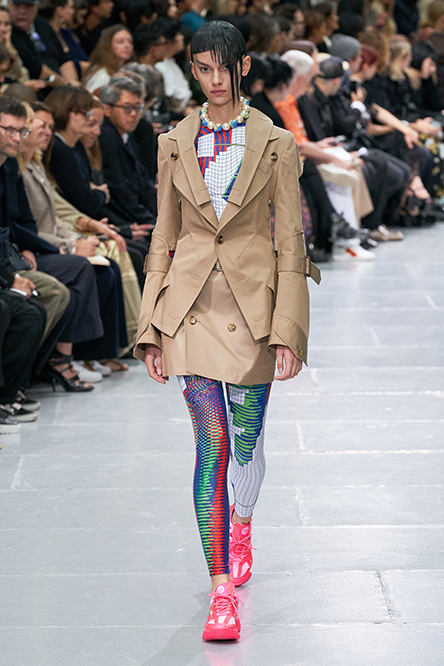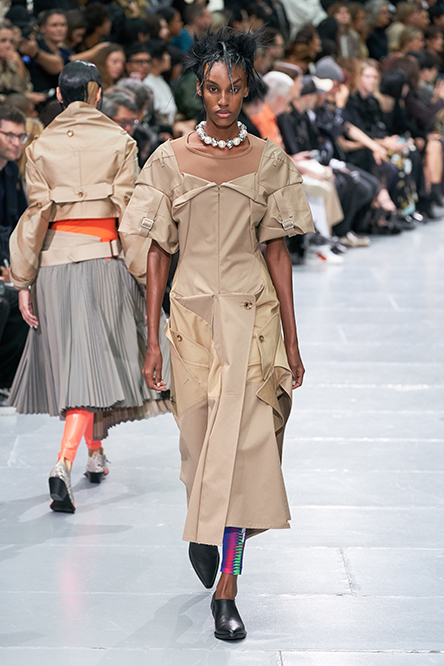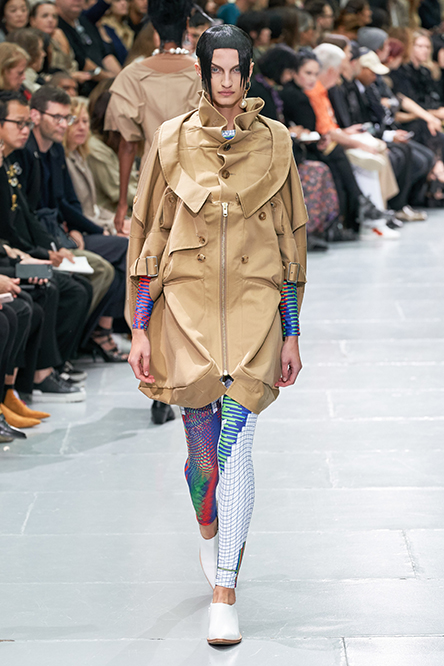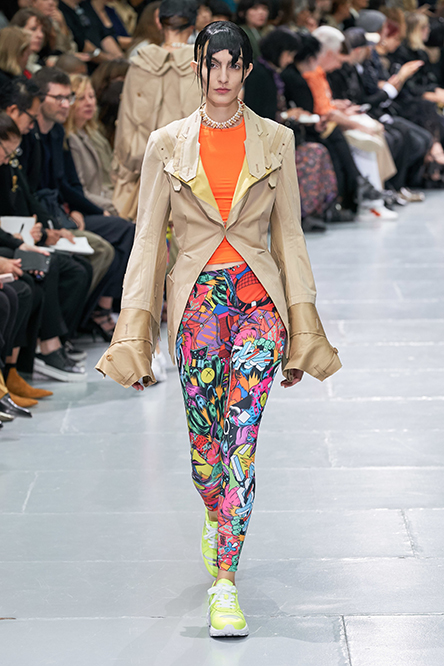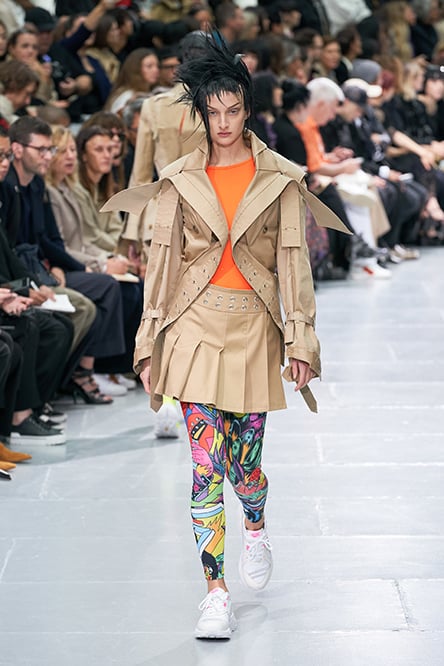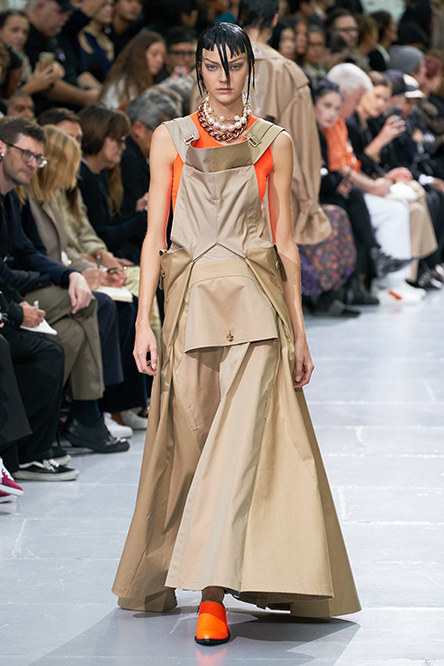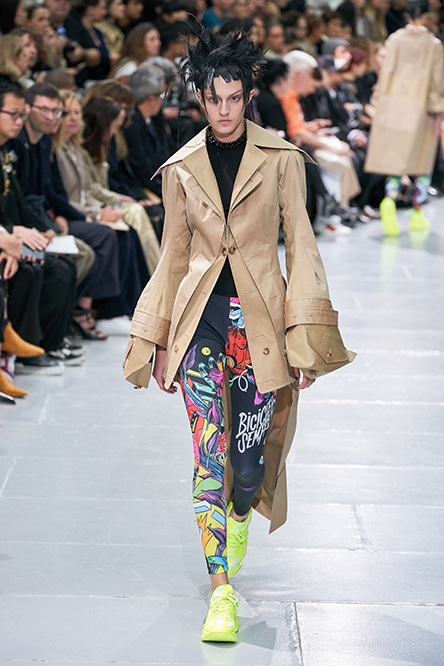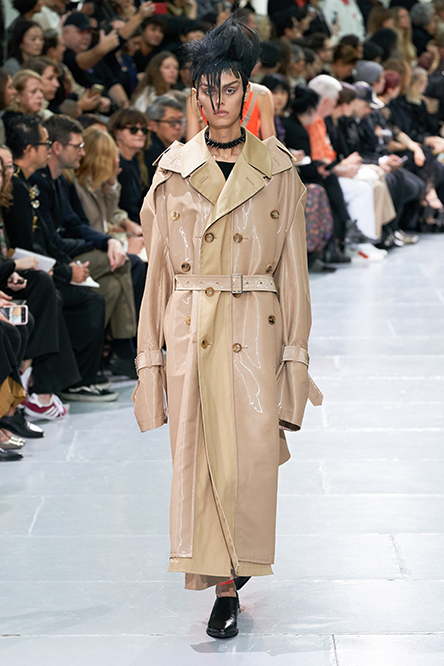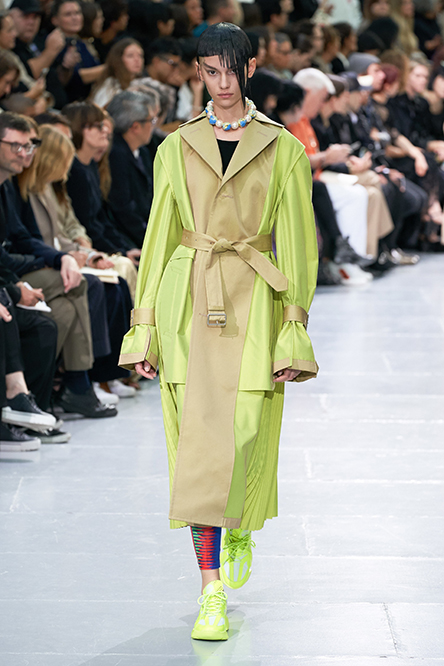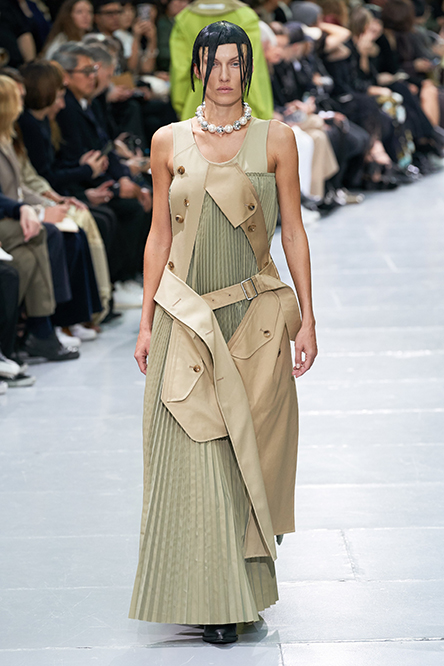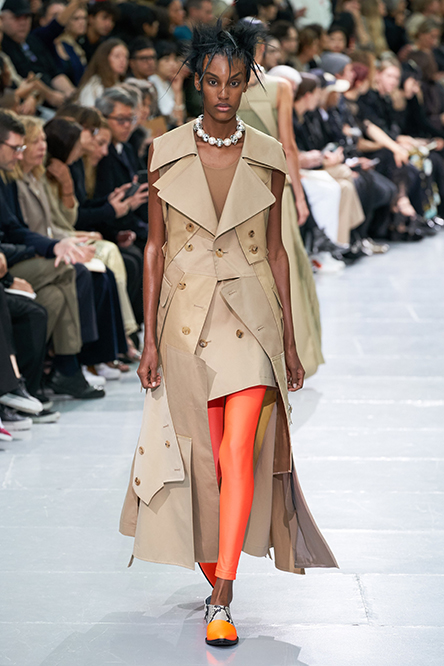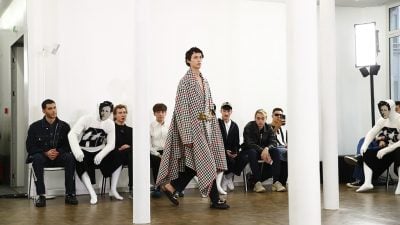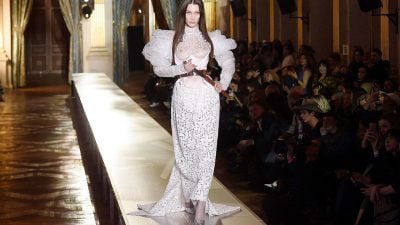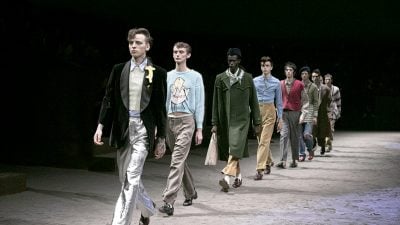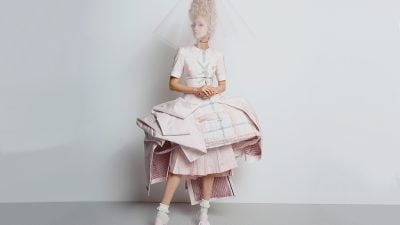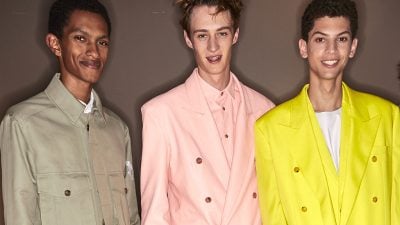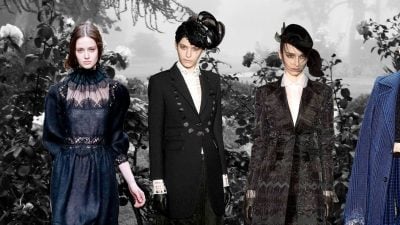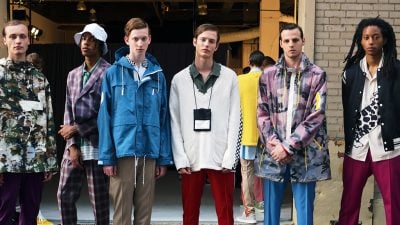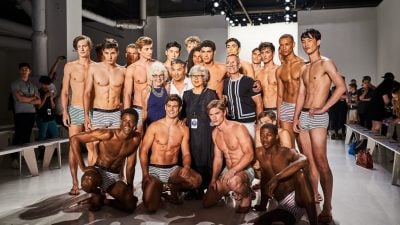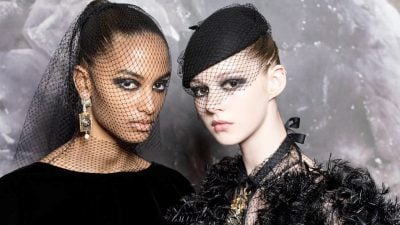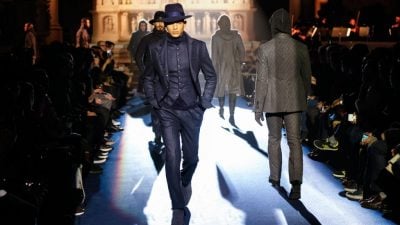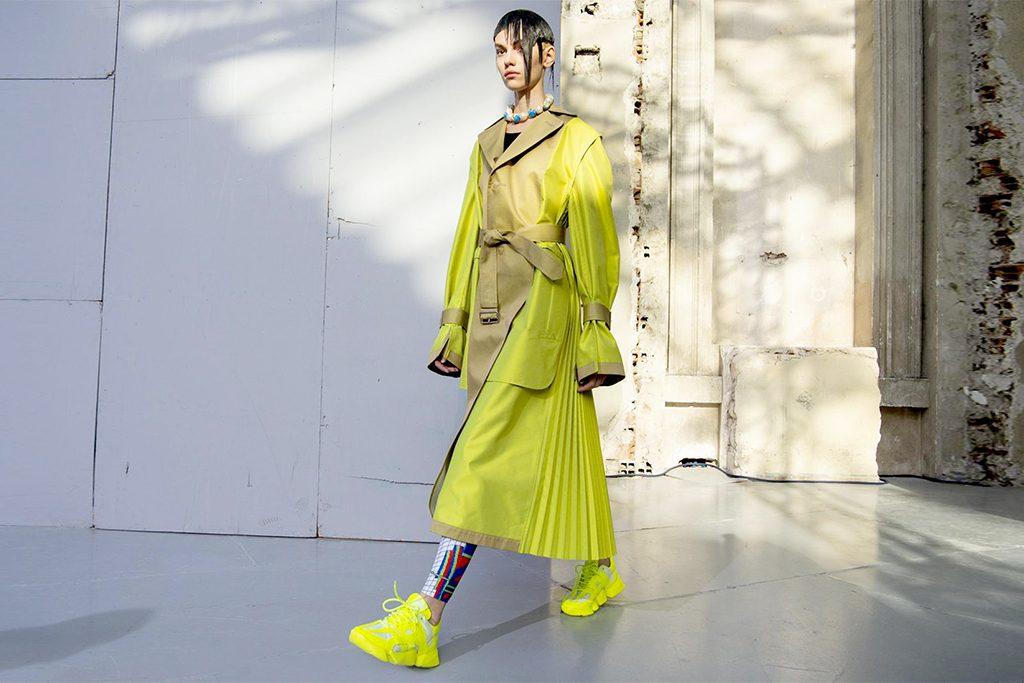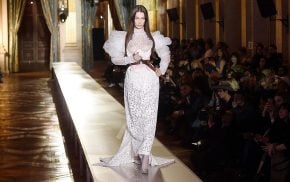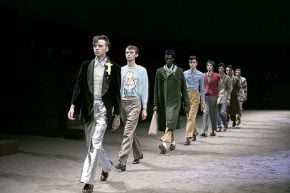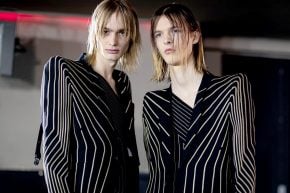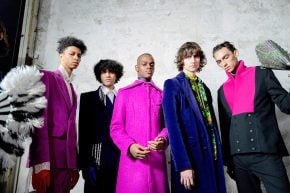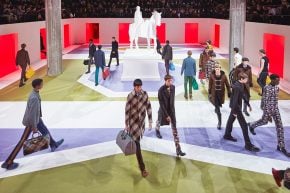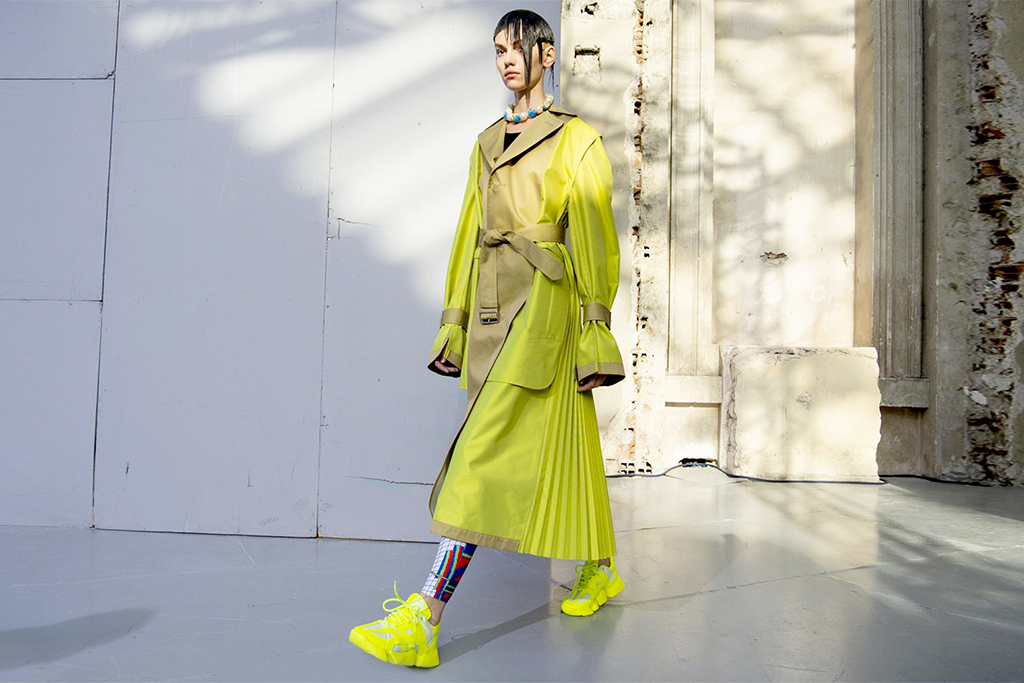
For Spring 2020, Junya Watanabe sent out countless variations on the trench coat in the same way a jazz virtuoso crafts variations on a theme. Sometimes he made small changes, and other times he tore them apart and reconstructed them into entirely new compositions. We’ve seen a lot of deconstruction of late, but few designers come close to Junya Watanabe’s impressive mastery of tailoring. Many of his looks were intricate in both shape and complexity with jackets displaying multiple seams running down the length of the sleeves to create a highly nuanced and controlled form. While other garments were shaped with soft folds handled so deftly that they appear almost incidental, cinched in place by belts. The unique seams and stitching in his garments, along with the raw edges and natural folds reveal Watanabe’s light touch and imperfect beauty so characteristic of Japanese design philosophy.
Almost everything in the collection was rendered from trench coat components, denim jackets and black leather “moto” jackets. What’s extraordinary is Watanabe’s penchant for using what he calls “dumb” clothes like trench coats, denim jackets, and t-shirts to create historically informed, yet futuristic silhouettes meticulously crafted from humble garments. There are cinched waist jackets with raised necklines and flared hips, classic tailcoats with sleeves the shape of an unopened flower, heavy square shouldered boxy cut jackets, soft cocoon dresses, and sculpted mermaid gowns. Fresh spandex pieces and oversized pear shaped jewelry added a fresh, clean polish that felt very modern and playful. The neon rainbow colored prints were designed by Brazilian duo Bicicleta Sem Freio.
If you are a devotee of Watanabe’s work, you’ll recognize several pieces from his Spring and Fall 2006 collections. Some riding jackets and a long mermaid dresses were almost identical in shape and construction to the trench coat and army fatigues from this earlier period. It’s as if Watanabe wasn’t done with them. Or maybe this is a reminder that he’s been doing this deconstructed sculptural thing for far longer than anyone. This is something we see designers do again and again. They return to a particular silhouette, as if still searching for the perfect form, and perfect execution of the concept.
If Watanabe’s 2006 collection originated from army fatigues, then his 2020 collection appears to emanate from the timeless trench coat. The lines are cleaner this time, and more precisely controlled, though the choppy haircuts and graffiti inspired prints reflect the rebellious attitude that’s always present in Watanabe’s work. So why is Watanabe clearly referencing his own work? It could be an anti-fast fashion message, a reminder that really beautiful clothes stay relevant for a long time. Another possibility is that even though these pieces aren’t likely upcycled, they very well could be. There were skirts made from whole coats, and a mini dress made from artfully mismatched scraps. Shirt dresses were made by transplanting the fronts of coats onto bodices, or wrapped around the waist like waspies. The deconstruction seems to be pointing towards reuse, creating new shapes out of recycled garments. Perhaps his message is a hopeful one in the face of a chaotic, unpredictable world, that with creativity there will always be beauty.
See All the Looks from the Collection



